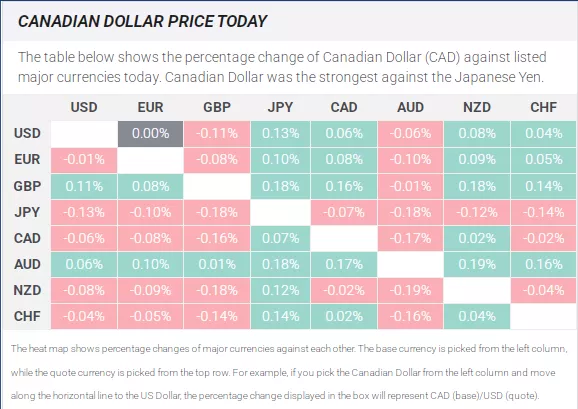Canadian Dollar Weakens To Three-Month Low Despite Upbeat Retail Sales

Photo by Michelle Spollen on Unsplash
The Canadian Dollar (CAD) continues to lose ground against the US Dollar (USD) on Friday, marking its fourth consecutive daily decline, as the Greenback strengthens across the board. At the time of writing, the USD/CAD pair is trading around 1.3920, its strongest level since May 21.
The Canadian Dollar remains under pressure despite the release of stronger-than-expected June retail sales earlier on Friday. Headline sales rose 1.5% MoM, in line with expectations, while sales excluding autos jumped 1.9%, surpassing the market forecast of 1.1%. May’s figures were also revised slightly higher, softening the depth of the prior month’s decline.
However, the upbeat June report was offset by Statistics Canada’s advance estimate, which pointed to a 0.8% decline in July retail sales, highlighting the fragility of consumer demand. This forward-looking weakness limited any immediate support for the Loonie, especially as global sentiment remains centered on the Federal Reserve’s next policy steps.
The upside in the US Dollar comes as market participants turn cautious ahead of Federal Reserve (Fed) Chair Jerome Powell’s highly anticipated speech at the Jackson Hole Symposium at 14:00 GMT. Investors are looking for fresh policy signals after mixed economic data and hawkish remarks from Fed officials during the week, which prompted traders to scale back near-term rate cut expectations. According to the CME FedWatch Tool, markets now assign roughly a 70% probability of a 25 basis-point (bps) cut in September, down from near-certainty just a week earlier.
Boston Fed President Susan Collins struck a cautious tone on Friday, telling Bloomberg TV that the US economy’s fundamentals remain “relatively solid,” but risks are finely balanced. Collins highlighted upside risks to inflation and downside risks to labor markets, stressing that policy is already “modestly restrictive” and appropriate for now. She noted that it is “not a done deal” on what the Fed will decide at its next meeting, underscoring the need to weigh both mandates carefully. Collins added that job growth is slowing, while the potential impact of higher tariffs on inflation could be “larger and more persistent” than initially thought, though she is “not that worried” about inflation expectations drifting higher.

More By This Author:
AUD/USD Price Forecast: Below 0.6415, The Pair Might Fall To 0.6375
EUR/USD Trims Losses As The Market Braces For Fed Powells Speech
Japanese Yen Hits Three-Week Low Against USD After Domestic Inflation Data



